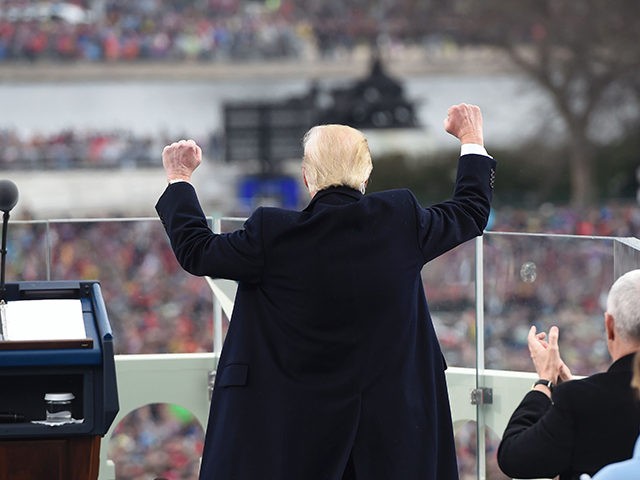Although the left is ridiculing President Donald Trump by claiming that his inaugural crowd was 160,000 versus the President’s 1 million and 1.5 million estimate, commercial technology was not available on the overcast day to give an accurate inaugural attendance.
The latest brouhaha started when BBC’s Radio 4 Today program interviewed Marcel Altenburg, who identified himself as a “crowd scientist” from Manchester Metropolitan University. Altenburg claimed that Donald Trump’s National Mall crowd “was a third of what we saw in 2009” in the same location for Barack Obama’s first inauguration (Obama’s crowd was estimated at 1.8 million).
Altenburg’s math meant that President Trump’s crowd would have been about 600,000 attendees. But by the time the story got to the New York Times, they reported that the crowd was only “about 160,000 people in those areas in the hour leading up to Mr. Trump’s speech Friday.”
The Times added that “at least 470,000 people were at the women’s march in Washington in the areas on and near the mall at about 2 p.m. Saturday,” or about triple Trump’s crowd.
But a review of Manchester Metropolitan University’s faculty does not list a “Marcel Altenburg” as a professor. LinkedIn does list a “Marcel Altenburg” as an “Enterprise Delivery Fellow.” Mr. Altenburg does not have a Ph.D. and only lists himself as currently enrolled in a Master of Science program in “Crowd Safety and Risk Analysis.” Altenburg states he began the program in 2015 and will not obtain his masters until 2018.
With the media and Trump Administration in another tangle over who is making up “Fake News,” the TechCrunch blog decided to ask experts in the geospatial analytics arena to find out why accurately estimating crowds might be difficult.
Orbital Insight and Descartes Labs are two companies that use machine learning models to analyze satellite imagery feed data to quantify trends and generate forecasts. Examples of their tasks might include counting cars in a Walmart parking lot so that hedge funds can predict company earnings trends ahead of corporate SEC filings.
Descartes Labs CEO Mark Johnson told TechCrunch that a $750 million spy in-the-sky satellite with enough spacial resolution to analyze crowd density would have been thwarted by the thick clouds that “obfuscated Washington, D.C. on both inauguration day and the day of the Women’s March.”
Johnson told TechCrunch, “There are sensors that can see through clouds like Synthetic Aperture Radar (SAR), but those instruments are rare.” That is techspeak for the fact that military level reconnaissance satellites are generally not available for commercial crowd counting.
Johnson also commented that the orbital frequency and angle of sophisticated satellites such as WorldView-4, traveling in an orbit at 17,000 miles an hour, would not be on station for the 20 minutes of President Trump’s speech, let alone the 80-minute program.
A high flying helicopter or drone would have the capability to loiter at altitude during the inaugural events. But the Federal Aviation Administration has restricted a “No Drone Zone” and “Special Flight Rules Area” within a 30-mile radius of Ronald Reagan Washington National Airport. The Secret Service and Washington D.C. Park Police would also never allow such a security risk with a major event in the National Mall.

COMMENTS
Please let us know if you're having issues with commenting.